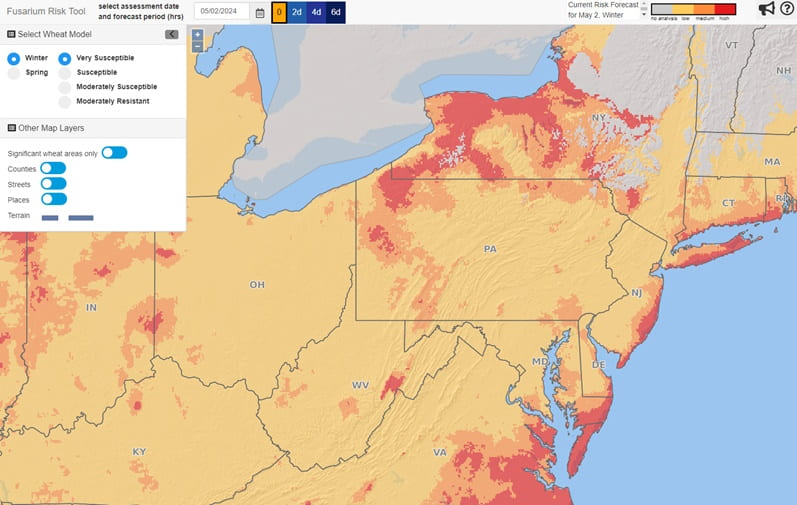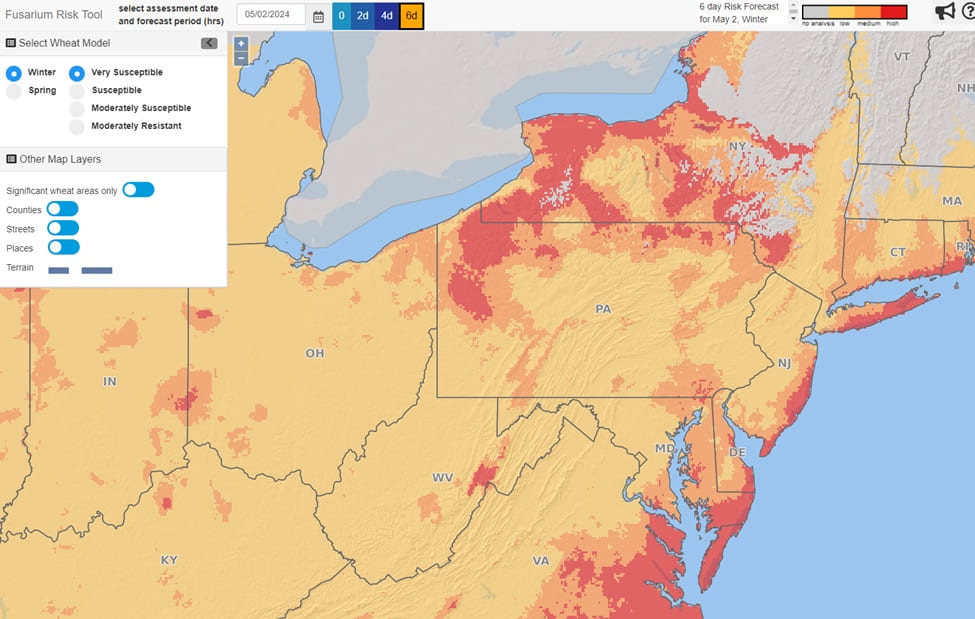Alyssa K. Betts, Extension Field Crops Pathologist; akoehler@udel.edu
Wheat is just approaching or actively flowering. Conditions have been dry, and we are at low to moderate disease risk in very susceptible wheat based on the FHB Risk Model (Figure 1). Rain appears to be moving into the forecast for next week. If we get some of those rain events, risk level will increase (Figure 2). Risk remains low for varieties that are moderately susceptible. If you are planning a wheat fungicide application, scout frequently and wait to apply when at least 50% of the wheat heads are flowering. You will be looking for bright yellow anthers in the center of the wheat head to signal the start of flowering (Figure 3). Remember, if you spray too early, heads that have not emerged (secondary tillers) will not be protected by the fungicide application. Additional details on fungicide application can be found in the April 5 article.

Figure 1. FHB Risk Model for very susceptible wheat on May 2, 2024 (wheatscab.psu.edu)

Figure 2. FHB Risk Model 6 day forecast for very susceptible wheat as of May 2, 2024 (wheatscab.psu.edu)

Figure 3. Flowering wheat with yellow anthers visible
Stripe rust appeared in NC on April 17 and was observed at low incidence this week on eastern shore VA. We have not yet seen any stripe rust in DE. Stripe rust gets its name from the yellow to orange pustules found in stripes on the leaf (Figure 4). There is also a leaf rust that we sometimes see late season, but for that one pustules are randomly scattered over the leaves.
Varieties that are resistant and moderately resistant to stripe rust are at low risk, those rated as susceptible or moderately susceptible should be monitored. Early season infections are the most damaging for yield. If stripe rust does show up, hopefully we will be far enough in the season to minimize yield loss. With much of our wheat near flowering, if planning a fungicide application for head scab, this will also have activity on stripe rust.

Figure 4. Wheat leaf with lesions from stripe rust (https://cropprotectionnetwork.org/publications/an-overview-of-stripe-rust-of-wheat)
